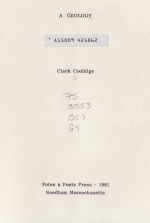There is an ever-growing wealth of mammalian fossil material being collected from palaeontological and archaeological sites in southern Africa. This reference provides comprehensive information on the taxonomy and distribution in time and space of all currently recognised southern African fossil mammals. After an introductory background chapter on southern Africa, mammals, sites and dating, the following chapters are presented by epoch, covering the Eocene, Miocene, Pliocene, Pleistocene and Holocene. Individual maps provide information on where in the landscape specific taxa have been found, and a comprehensive index lists all the fauna and site locations. It ends with a chapter on how the book can be used, and lines of future research. Collecting a vast amount of information together in an accessible format, this is an essential reference for non-specialist taxonomists and palaeontologists, as well as for those using fossil data for other applications, such as archaeology, neontology and nature conservation. This title is also available as Open Access on Cambridge Core.













